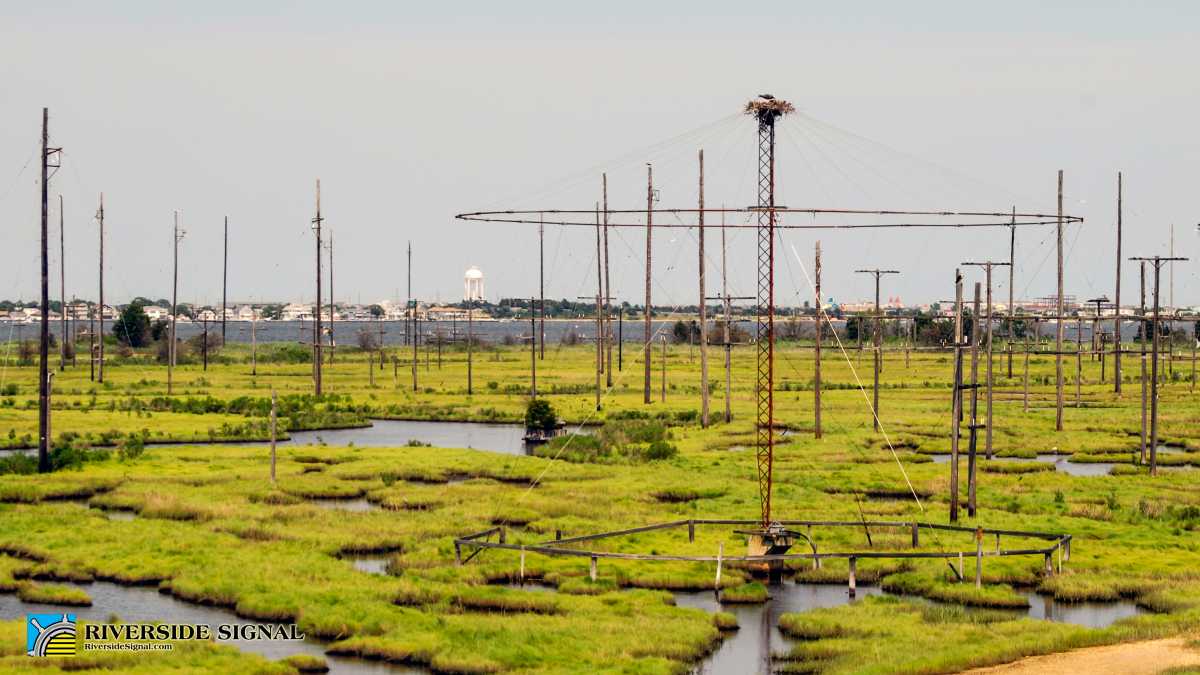Iconic shortwave poles to soon disappear from Jersey Shore marsh

Good Luck Point on July 3
The iconic poles emerging from an Ocean County tidal marsh that once sent messages to deep sea ships and broadcast a government radio station will soon disappear.
A plan funded by the federal Disaster Relief Appropriations Act of 2013 calls for the removal of 340 wooden poles from Good Luck Point at the foot of the Toms River in the Bayville section of Berkeley Township. The site also fronts on the Barnegat Bay and has been featured prominently in countless sunset photographs taken from across the waterway in Seaside Park.
Crews will also remove the associated cables, wires, metal towers, and concrete blocks. The work is expected to begin later this month.
“The goal of this action is to enhance coastal marsh habitats by increasing marsh resiliency from impacts of large storm events and other ecosystem stressors,” according to a U.S. Fish & Wildlife Service release.
Berkeley Township, which owns the long vacant building on the site once occupied by AT&T, is seeking grant money to facilitate its demolition. Officials hope to turn the site into an observation area.
The poles are a component of inactive shortwave antenna fields associated with AT&T’s ship-to-shore shortwave communications system, which was in operation at the site from the early 1930s until 1999, according to the release.
The area also includes a shortwave transmitter building. Under the call sign “WOO,” the station helped broadcast Voice of America around the globe after 1944.
The Trust for Public Land bought 365 acres of land within area in 1999, followed by another purchase of 211 acres for inclusion within the Edwin B. Forsythe National Wildlife Refuge.
Good Luck Point is a bird migration and wintering spot along the Atlantic Flyway, according to The Trust for Public Land.
The removal of more than 100 wooden poles and ancillary components from a companion site, containing a shortwave receiving station and antenna field, in Manahawkin has been postponed.
At that site, shortwave communications from ships at sea were linked to America’s telephone network from the 1930s until 1999.
WHYY is your source for fact-based, in-depth journalism and information. As a nonprofit organization, we rely on financial support from readers like you. Please give today.

